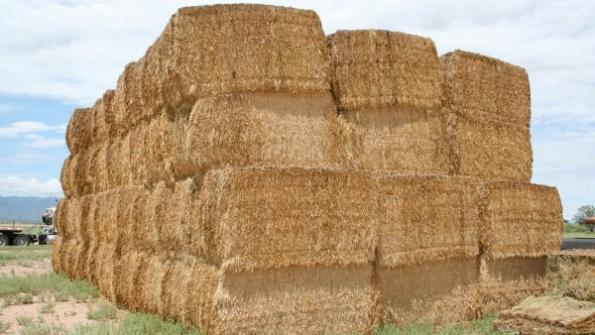
Alfalfa hay growers told to lower 2012 price expectations
Respected marked analyst Seth Hoyt said lower prices could help stabilize alflafa acreage and help struggling dairymen.Despite record 2011 prices, Western state hay acreage is not increaseing as expected.Cropping alternatives make alfalfa less attractive.
December 27, 2011

Although hay prices were as robust in mid-December as they had been in 2011, market analyst Set Hoyt says they are not likely to stay there for the 2012 hay market season.
Hoyt of Ione, Calif., a former government market analyst who now publishes the well-respected The Hoyt Report, says despite December prices of up to $310 per ton for Arizona barn hay, California and Western U.S. hay growers can expect to receive $30 to $50 per ton less overall for their 2012 alfalfa. First cutting, supreme quality for the 2012 season now hitting the market is expected to bring strong prices due to a lack of available supplies; however, after that Hoyt said prices will taper off and average below 2011 levels.
Hoyt added in his market outlook presentation at the 2011 Western Alfalfa and Forage Conference in Las Vegas: Lowered expectations would be good after overheated and uncertain hay markets of the past couple of seasons.
Hoyt explained lower prices could be a “win, win, win” long-term for growers and dairymen alike because lower prices could help dairymen reduce costs and feed more alfalfa to milking cows. They could also help to sustain alfalfa acreage, which has been dropping.
In response to the record high 2011 prices, California dairymen reduced the amount of alfalfa they fed to rations from 11.15 pounds per day in 2010 to what Hoyt expects will be 9.5 pounds in 2011. In 2002, it was 13 pounds.
Some California dairymen were feeding very little, and in some cases, no alfalfa hay at all to dry cows. Dairymen in other states reduced alfalfa hay usage as well, but it was not the magnitude of what occurred in California.
Hoyt acknowledged that weather and other factors could change his early December forecasts when he predicted Western U.S. hay prices would range from $250 top $270 for Imperial Valley hay; $270 to $280 for Central California alfalfa, and $230 to $240 for Nevada, Idaho and Utah hay.
Year-end 2011 hay stocks should be down in the seven Western States. However, they will likely be slightly higher than last year in California due to less usage.
Minimal acreage increase
Strong hay prices would historically reflect an increase of 15 percent or more in alfalfa hay acres. Hoyt predicts, though, it will be up only 2 percent to 5 percent in the seven Western states. The acreage is not increasing as past history would indicate because growers still have attractive crop options to alfalfa, and they are concerned about many dairies that are still struggling and farmers who want to be more diversified. While non-durum wheat prices are not spurring much interest in most Western starts, $380 to $400 per ton for desert durum wheat has cut into Imperial Valley alfalfa acreage. The desert valley is a major alfalfa source for California and Arizona dairies.
Hay prices are directly tied to milk process and growers are still concerned about the direction of those prices and the ability of dairymen to pay for hay. Hoyt pointed out milk futures are not that strong right now.
Hay exports will be strong again in 2012 with good demand expected from the UAE, China, Japan, and Korea. While rain damage to Australia’s oaten hay crop the past two months should improve demand for sudan and timothy hay in the Western U.S., it could even help demand for alfalfa hay, Hoyt predicted.
“Competition will be strong between export buyers, but I believe a moderation of prices is what export buyers are hoping for. Their overseas customers were not happy with the very strong alfalfa hay prices in 2011 and are hoping that prices will come down in 2012,” he said.
The drought in Texas and New Mexico also drove up 2011 prices and that seems to have eased, which is another reason 2012 prices are expected to moderate.
About the Author(s)
You May Also Like





